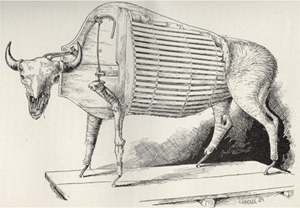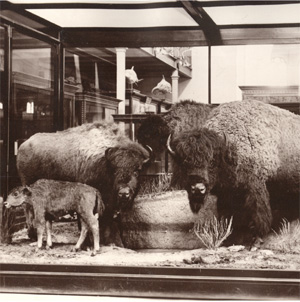Taxidermy: The Soul in the Skin & Epidermic Media
Soul in the Skin
The task of the taxidermist, if properly appreciated, is a grave and serious one. It is to impart to a shapeless skin the exact size, the form, the attitude, the look of life.
— William T. Hornaday
In 1899, Robert Shufeldt, a prominent Washington DC scientist and politician, published an unusual report on behalf of the U.S Federal Government. Funded by the National Museum, Scientific Taxidermy for Museums: A Report Based on a Study of the United States Government Collections was the first comprehensive survey of the art and practice of taxidermy in America. By providing a survey of the taxidermic displays in the nation's museums, while simultaneously commenting on the merits and faults of particular styles and artists, Shufeldt sought to elevate the status of the art of preparing, stuffing and mounting the skins of animals. According to Shufeldt, "it is the business of the museum to bring whole living sections of nature within its walls." He argued that the success of the modern museum therefore depended on taxidermy, a means by which dead creatures could be directly transformed into appealing exhibits.
Traditional museum taxidermy, according to Shufeldt, was entirely incapable of such a feat. American museum taxidermists in the early nineteenth century produced drab and lifeless specimens. Taxidermists and curators usually chose to display the animals in isolation from one another in sterile white cases — arrangements that hardly evoked "whole living sections of nature." In Shufeldt's opinion, the reanimation of the museum required the reinvigoration of its taxidermists and their productions. In his view, traditional museum displays should be replaced by dynamic "habitat groups," composed of several specimens posed in life-like attitudes and placed in natural terrain. Developed as the "group method" of taxidermy, such habitat groups would bring the museum to life by filling its halls with "the look of life."
One museum display at the National Museum exemplified what Shufeldt hoped the future of taxidermy and the American museum would hold. He reported to his readership:
We have now to notice one of the very finest accomplishments that the art of taxidermy has yet produced in this country. I refer to the case containing the several specimens of our now nearly extinct bison or American buffalo.
The Buffalo Group, completed eleven years earlier in 1888, was conceived and constructed by Hornaday, who was especially drawn to the buffalo as an endangered American hunting target. In January 1886, he had presented to the directors of the National Museum the idea of a habitat group to be installed in the freshly conceived "Hall of Mammals." Hornaday mounted six "perfect" specimens out of the twenty-five he had collected in Montana, arranging them in a 16x12x11 foot glass and mahogany case. Within this case, he produced a wilderness scene, in which he placed genuine Montana sod and created an artificial alkaline pool. Journalists praised the final effect of the display. The Washington Star ran a photograph with the following caption:
A scene from Montana — Six of Mr. Hornaday's Buffaloes form a picturesque group — a bit of the Wild West reproduced at the National Museum — something novel in the way of taxidermy — real buffalo-grass, real Montana dirt, and real Buffaloes.
Scientists as well as lay people recognized that the Buffalo Group was innovative in both method and effect. Before Hornaday's work at the National Museum, group displays, rejected by scientists, were created only by amateur taxidermists. These taxidermists produced the groups for commercial reasons — for wealthy patrons or special traveling exhibitions — and were far more concerned with dramatic effect than scientific education. The Buffalo Group project brought the group-mount idea into a scientific context, replacing the traditional drab museum mount with a new kind of scientifically meritorious theater — a new "taxidermic" media simultaneously iconic and indexical in its inscription of matter and meaning with preservative.


